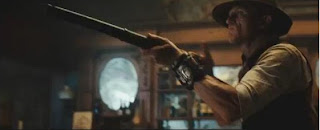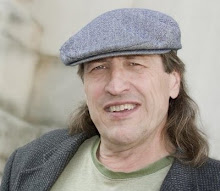
What really annoys me about some critics’ reaction to this film is their lack of knowledge about western literature tradition.
Some keep calling it a mash up of Sci-fi and Western genres, when the film – like Wild, Wild West – is a tribute to the late Penny western novels in which space ships and other oddities were common features.
A TV series – I think the name was Briscoe County – was typical of the late western fiction that was published at the Turn of the Century, influenced sharply by the works of Jules Verne and H.G. Wells.
Like all films executive produced, produced or directed by Steven Spielberg, Cowboys & Aliens is an homage to other films. For instance, the rolling ball from Indiana Jones and the Raiders of the Lost Ark was hardly an original idea, taken literally from the 1959 film, Journey to the Center of the Earth.
This is particularly true in Cowboys & Aliens. Although I haven’t yet been able to find it, the opening scene comes almost directly from another classic film, as do several other critical scenes in the film – especially those dealing with pumping up the western aspects of the film.
More importantly, the film falls back on classic Hollywood structure to give it bones.
The fundamental element of this film like most classic westerns is why violence is necessary to preserve civilization.

We get this in nearly all of the main characters.
While Jake has become a champion for preserving civilization, he is a late comer to the cause, lured over to the good side by his love for a prostitute (something of an homage to Clint Eastwood’s “The Unforgiven.”
But each character is brought to the edge of violence for the same reason – the military man, frustrated with bureaucracy, is taught finally why the civil war was necessary and why the loss of his men over a corn field mattered – when the other option is total lack of civilization.
The minister gave sage “friendly” advice to the doctor, telling him to get a gun and learn how to shoot, then proceeds to teach him.
Even the grandson to the sheriff learns that he has to hold onto the knife and use it to preserve good.
This film also holds true to the linked pattern of open space imagery that is so essential to western.
Classic films have a strange riding in from the wilderness – such as in Shane – and we get that in this film, too. As in Shane, Jake rides back out into the wilderness, again at the end.
All classic westerns require a brawl in a saloon, and this film does not disappoint us, and like in classic films, we get something of a gun fight against the aliens at the end, with images of the exploding Columbia shuttle too boot.

No comments:
Post a Comment